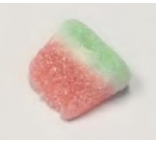Addressing when a drawing in a prior art reference includes a teaching that is “clear on its face,” the Director of the US Patent & Trademark Office vacated and remanded a Patent Trial & Appeal Board decision denying institution of an inter partes review (IPR) petition. MAHLE Behr Charleston Inc. v. Catalano, IPR2023-00861 (PTAB Decision Review, Apr. 5, 2024) (Vidal, PTO Dir.)
MAHLE Behr filed a petition requesting institution of an IPR, challenging claims of a patent owned by Catalano. The patent is directed to a device known as a sacrificial anode that prevents corrosion in motor vehicle radiators caused by electrolysis. One of the claim terms at issue requires the anode to be “within 10 inches” of another element. MAHLE argued that a figure in a prior art reference anticipated or rendered obvious several challenged claims.
The Board denied the institution after determining that MAHLE did not establish a reasonable likelihood that it would prevail with respect to at least one of the challenged claims. The Board cited the Federal Circuit’s 2000 decision in Hockerson-Halberstadt v. Avia Group International to explain that “[p]atent drawings do not define the precise proportions of the elements and may not be relied on to show particular sizes if the specification is completely silent on the issue.” The Board concluded that the figure relied on by MAHLE did not provide exact dimensions and thus could not be sufficient to render the claims invalid.
MAHLE filed a request for Director Review, which was granted. In its request, MAHLE argued that the Board erred in its application of Federal Circuit case law on the use of patent drawings as prior art teachings. The Director agreed, explaining that “the Board did not adequately address [MAHLE’s] arguments regarding what [the figure in the prior art] clearly shows or would have reasonably suggested to a person of ordinary skill in the art.” Federal Circuit case law established that a claim may be anticipated or rendered obvious by a figure in the prior art if the drawing clearly discloses the claim limitation. If “a person of skill in the art could derive the claimed dimensions from the patent’s disclosure, there is no additional requirement that the specification must explicitly disclose the precise proportions or particular sizes.”
The Director further explained that “the Board did not adequately address MAHLE’s arguments regarding what [the prior art figure] clearly shows or would have reasonably suggested to a person of ordinary skill in the art.” While the prior art figure did not disclose the precise proportions or measured quantity specified in the challenged claims, the figure showed the elements being located as claimed (necessarily within the 10 inches recited). The Director explained that the Board should have considered whether a person of ordinary skill in the art would have understood the figure to disclose the claimed elements being within 10 inches of each other.
The Director vacated the Board’s decision and remanded the petition with instructions to consider both what the prior art figure [...]
Continue Reading
read more

 Subscribe
Subscribe



